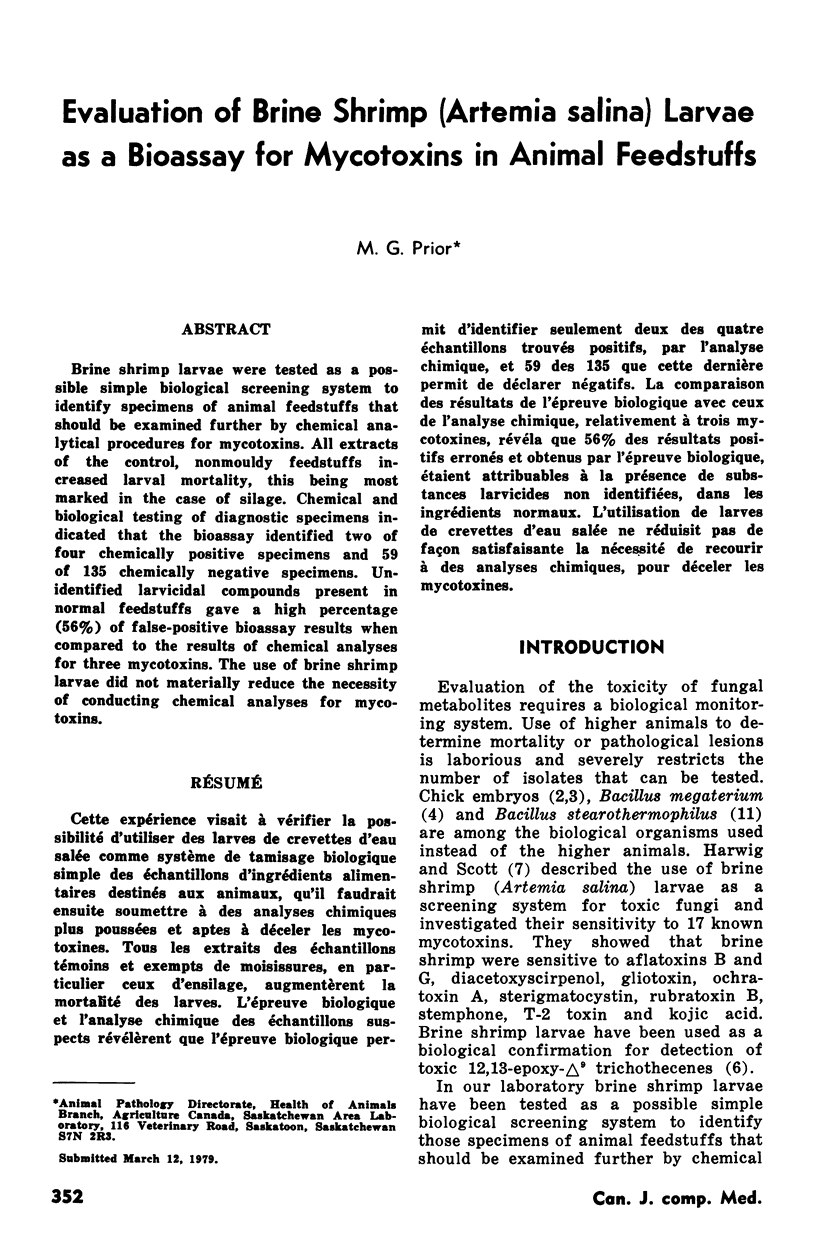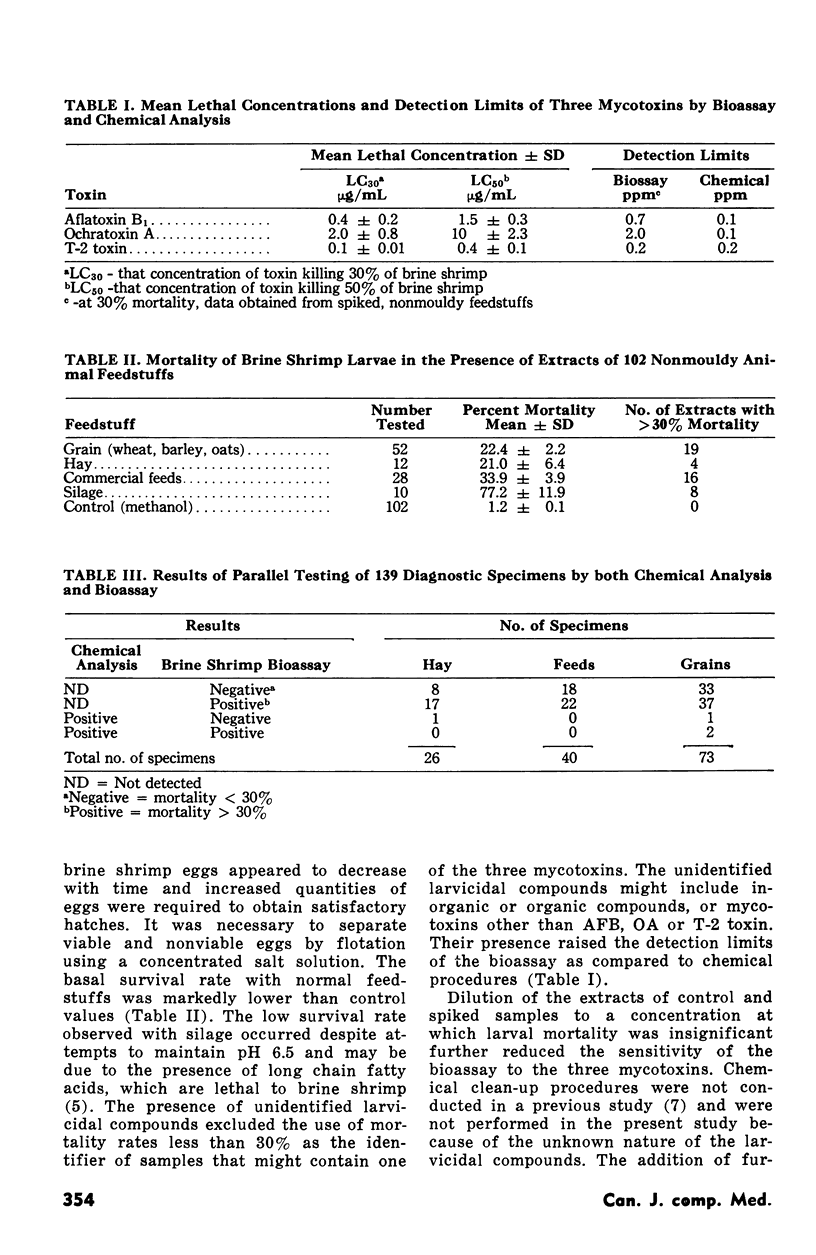Abstract
Brine shrimp larvae was tested as a possible simple biological screening system to identify specimens of animal feedstuffs that should be examined further by chemical analytical procedures for mycotoxins. All extracts of the control, nonmouldy feedstuffs increased larval mortality, this being most marked in the case of silage. Chemical and biological testing of diagnostic specimens indicated that the bioassay identified two of four chemically positive specimens and 59 of 135 chemically negative specimens and 59 identified larvicidal compounds present in normal feedstuffs gave a high percentage (56%) of false-positive bioassay results when compared to the results of chemical analyses for three mycotoxins. The use of brine shrimp larvae did not materially reduce the necessity of conducting chemical analyses for mycotoxins.
Full text
PDF



Selected References
These references are in PubMed. This may not be the complete list of references from this article.
- Choudhury H., Carlson C. W. The lethal dose of ochratoxin for chick embryos. Poult Sci. 1973 May;52(3):1202–1203. doi: 10.3382/ps.0521202. [DOI] [PubMed] [Google Scholar]
- Curtis R. F., Coxon D. T., Levett G. Toxicity of fatty acids in assays for mycotoxins using the brine shrimp (Artemia salina). Food Cosmet Toxicol. 1974 Apr;12(2):233–235. doi: 10.1016/0015-6264(74)90369-1. [DOI] [PubMed] [Google Scholar]
- Eppley R. M. Sensitivity of brine shrimp (Artemia salina) to trichothecenes. J Assoc Off Anal Chem. 1974 May;57(3):618–620. [PubMed] [Google Scholar]
- Harwig J., Scott P. M. Brine shrimp (Artemia salina L.) larvae as a screening system for fungal toxins. Appl Microbiol. 1971 Jun;21(6):1011–1016. doi: 10.1128/am.21.6.1011-1016.1971. [DOI] [PMC free article] [PubMed] [Google Scholar]
- Prior M. G. Mycotoxin determinations on animal feedstuffs and tissues in Western Canada. Can J Comp Med. 1976 Jan;40(1):75–79. [PMC free article] [PubMed] [Google Scholar]
- Puls R., Greenway J. A. Fusariotoxicosis from barley in British Columbia. II. Analysis and toxicity of syspected barley. Can J Comp Med. 1976 Jan;40(1):16–19. [PMC free article] [PubMed] [Google Scholar]
- Reiss J. Mycotoxin bioassay, using Bacillus stearothermophilus. J Assoc Off Anal Chem. 1975 May;58(3):624–625. [PubMed] [Google Scholar]
- Stoloff L., Nesheim S., Yin L., Rodricks J. V., Stack M., Campbell A. D. A multimycotoxin detection method for aflatoxins, ochratoxins, zearalenone, sterigmatocystin, and patulin. J Assoc Off Anal Chem. 1971 Jan;54(1):91–97. [PubMed] [Google Scholar]


